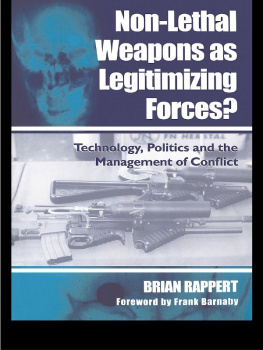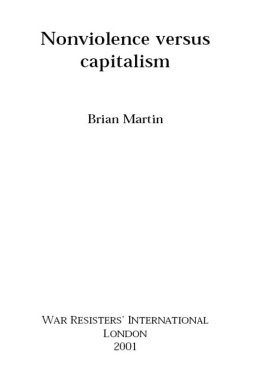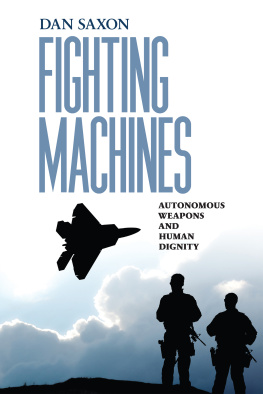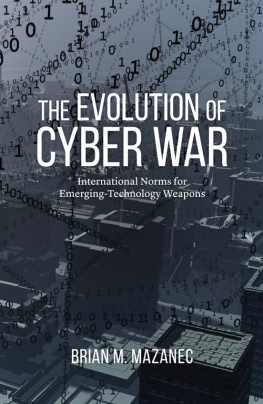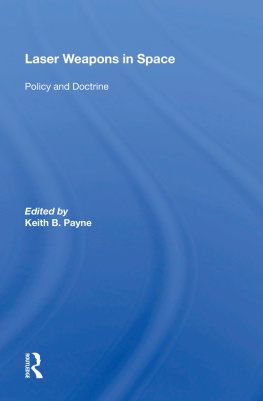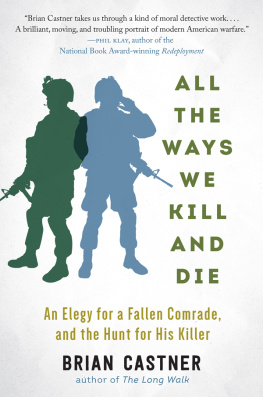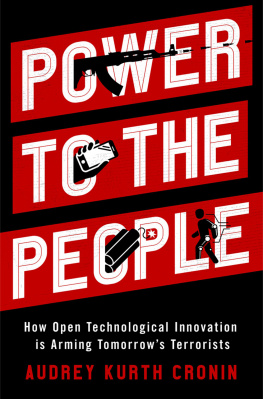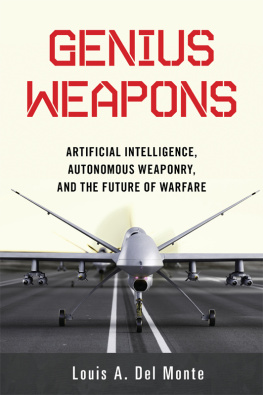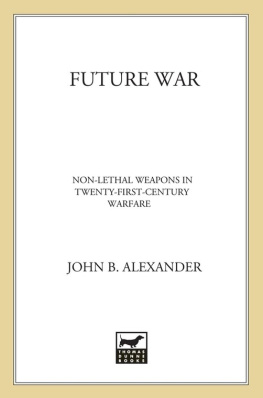First published in 2003 in Great Britain by
FRANK CASS PUBLISHERS
Crown House, 47 Chase Side
London N14 5BP
This edition published in the Taylor & Francis e-Library, 2005.
To purchase your own copy of this or any of Taylor & Francis or Routledges
collection of thousands of eBooks please go to www.eBookstore.tandf.co.uk.
and in the United States of America by
FRANK CASS PUBLISHERS
c/o ISBS, 920 NE 58th Avenue, Suite 300
Portland, Oregon 972133786
Website: www.frankcass.com
Copyright 2003 Brian Rappert
British Library Cataloguing in Publication Data
Rappert, Brian
Non-lethal weapons as legitimizing forces?: technology,
politics and the management of conflict
1. Nonlethal weaponsPolitical aspects 2. Nonlethal weapons
Case studies 3. Conflict managementEvaluation
I. Title
355.82
ISBN 0-203-01040-X Master e-book ISBN
ISBN 0-7146-5440-X (cloth)
ISBN 0-7146-8360-4 (paper)
Library of Congress Cataloging-in-Publication Data
Rappert, Brian.
Non-lethal weapons as legitimizing forces?: technology, politics,
and the management of conflict/Brian Rappert.
p. cm.
Includes bibliographical references and index.
ISBN 0-7146-5440-X (cloth)
1. Nonlethal weaponsGovernment policy. I. Title.
U795. R37 2003
355.8dc21 2003040935
All rights reserved. No part of this publication may be reproduced, stored in orintroduced into a retrieval system, or transmitted, in any form or by any means,electronic, mechanical, photocopying, recording or otherwise, without the priorwritten permission of the publisher of this book.
Foreword
On first sight, non-lethal weapons are attractive. Surely it is better to only temporarily injure someone than kill him or her. However, if misused, so-called non-lethal weapons kill. For example, as shown in Vietnam and Northern Ireland, riot-control incapacitating gases such as tear gas and CN can kill if used in confined spaces. And the use of rubber bullets and stun guns has often caused fatalities.
History shows that weaponslethal and non-lethaloften do not work in the ways their manufacturers claim. We have, for example, seen how frequently precision-guided weapons, designed to reduce collateral damage, fail to hit their targets.
Non-lethal weapons raise important questions about how death and injury should be weighed, bringing in judgements about the value of life and the legitimacy of weapons. Most people would disapprove of the use of, for example, laser weapons to blind troops, regarding them as inhumane weapons.
One wonders about the non-lethal weapons now being researchedsuch as acoustic infrasound weapons, designed to nauseate and disorientate; electromagnetic pulse beams, designed to increase body temperatures to intolerable levels by heating water under the skin; and a variety of chemical agents and psychotropic drugs, to induce hallucinations, anxiety and fatigue by targeting specific cells in the brain.
In particular, the development of genetically engineered microbes and psychopharmological drugs for use as future human incapacitants will raise serious and difficult questions about the definition of biological weapons and the scope of the 1972 Biological and Toxin Weapons Convention. Just how benign will these non-lethal weapons be? Not very, argues Brian Rappert in Non-lethal Weapons and Legitimizing Forces?
Non-lethal weapons raise important questions about the legitimacy of the use of force. These questions should be addressed in relation to future developments in national, regional and global security. Security at all levels will have to be fundamentally redefined to take into account future threats that will have evolved from a variety of global problems.
The most serious security problems will arise from the rapidly growing world population and the widening gap between rich and poor countries. This gap is likely to have increased North-South tension to such an extent that it will be greater than East-West tension ever was.
According to UNDP, a quarter of the todays worlds population remains in severe poverty even though the global GDP is about $25 trillion. About a third of the people in the developing countries1.3 billion peoplelive on incomes of less than $1 a day. Nearly a billion people are illiterate. Well over a billion lack access to safe water. And nearly a third of the people in the least developed countries are not expected to survive to age 40. As populations grow it is unlikely that the gap between rich and poor countries will narrow significantly.
Security will have to be fundamentally redefined to take into account the effects of: environmental degradation; the debt crisis; the biodiversity crisis (a large fraction of existing species, possibly half, may be lost within the foreseeable future); global climate changes, brought about by global warming; and deforestation. All of these are exacerbating North-South tension and are already beginning to be seen as important elements in the security of the industrialised countries. And mounting pressures on nonrenewable resourcesfertile land, fish, and particularly waterare increasingly recognised as major future threats to the security of, and causes of conflict between, Third World countries, and are therefore threats to global security. These threats will become increasingly serious as time goes on.
Many of these threats to security arise from and are exacerbated by increases in population. According to demographers, the world population will probably increase from todays 5,300 million to about 7,200 million by the year 2010 and then increase to about 11,000 million by 2030. The bulk of the increase will occur in the Third World, and most of it will go into cities so that huge metropolises will be created, with populations of many tens, and even hundreds of millions of people.
Most of the inhabitants of these megacities will live in abject poverty in shantytowns with inadequate, or often no, access to medical services, safe water, food, clothing, and housing. They will have woefully inadequate supplies of energy and little access to useful education services. These conditions are just those in which urban violence and terrorism flourish.
Future terrorists and urban guerrillas will be able to acquire, through the global arms trade, sophisticated weapons at relatively low cost, including long-range ballistic missiles equipped with nuclear, chemical or biological warheads. They will also be able to deliver weapons of mass destruction by simpler methodsperhaps carried in ships.
Problems arising from a huge world population will dominate the security policies of all nations. The Earths finite carrying capacity will almost certainly be unable to cope adequately with such large numbers of people, even though technological advances are likely to allow a somewhat higher world population than todays to be supported. Unless drastic steps are taken soon, disasterswar, pestilence, and famineare inevitable. The potential for future violence and conflict is obvious.

